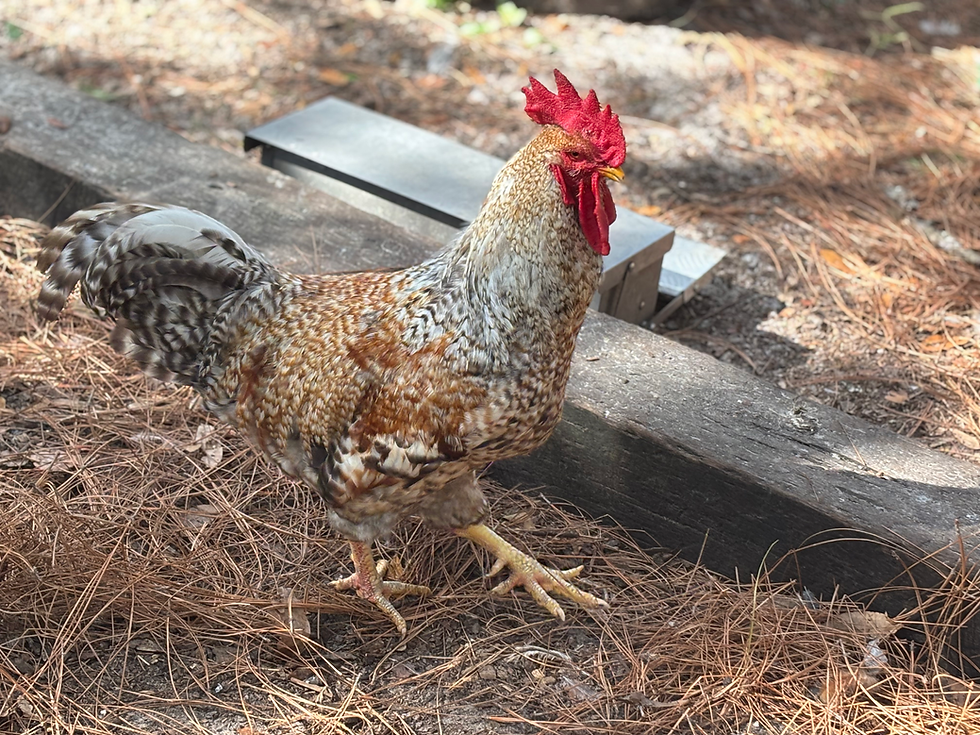Natural Pest Control: Managing Garden Pests, Rats in the Coop, and Fruit Flies Indoors
- April Johnson
- Feb 12
- 4 min read
Pest control is an ongoing battle, especially when you’re committed to using all-natural methods. Over the years, I’ve refined my approach to keeping my garden healthy, my chicken coop free of rodents, and my home protected from pesky fruit flies—all while avoiding harmful chemicals. Here’s a look at my experience with natural pest control and the methods that have worked best for me.

Garden Pest Control Using All-Natural Products
Gardening is a passion of mine, but pests can quickly turn a thriving garden into a disaster. Rather than resorting to synthetic pesticides, I’ve found success using all-natural solutions that are safe for my plants, pets, and the environment.
Neem Oil – This is my go-to for battling aphids, whiteflies, and other soft-bodied insects. A diluted neem oil spray effectively disrupts their life cycle without harming beneficial insects like bees and ladybugs. I apply it in the early morning or evening to prevent leaf burn.
Diatomaceous Earth – Sprinkling food-grade diatomaceous earth around plants helps control crawling insects like ants, caterpillars, and beetles. It works by dehydrating the pests without affecting earthworms or pollinators.
Companion Planting – Certain plants naturally repel pests. I plant marigolds near my tomatoes to deter nematodes and basil near peppers to keep aphids at bay. This method also enhances soil health and boosts plant growth.
DIY Garlic and Chili Spray – I blend garlic, chili peppers, and water to create a potent spray that deters insects. It’s particularly effective against caterpillars and beetles. A weekly application has significantly reduced pest damage in my garden.
Handpicking and Natural Predators – Some pests, like tomato hornworms, need a hands-on approach. I regularly inspect my plants and remove them manually. Encouraging birds, frogs, and beneficial insects like ladybugs has also helped maintain balance in my garden.
Rat Control in the Chicken Coop
Our chicken coop is close to the garden, and the rats have a field day when my garden is doing well. This winter, they have demolished starter crops of cauliflower, broccoli, and Brussels sprouts, to name a few. The health of the chickens is also a big contributing factor to keeping your coop free from these scavengers. Keeping a chicken coop free of rats is challenging, especially when food is involved. After trying various methods, I found that combining techniques has been the most effective in managing the rat problem without using poisons that could harm my chickens.
What Specifically Worked for Us:
Placing Traps Strategically – We set the UCatch Rat Traps along walls and entry points where rats were most active. Peanut butter has proven to be the best bait.
All Natural management- we use an open container containing cornbread mix and baking soda, which will explode a rat's stomach because it cannot pass gas.
Eliminating Food Sources – Keeping feed in metal containers with secure lids has drastically reduced rat attraction. We also clean up spilled feed daily.
Blocking Entry Points – Sealing small gaps with hardware cloth and ensuring proper coop maintenance has helped prevent re-infestation.
We are now feeding a barn cat that helps keep the rat population at bay.
These methods have been highly effective, humane, and easy to use. Within a few weeks, we saw a significant reduction in rat activity.
Fly Management with Zevo Plug-Ins
Fruit flies and standard flies are a nuisance, especially in warmer months. No matter how clean the kitchen is, they always find a way to linger around ripe fruit and houseplants. After some trial and error, Zevo plug-ins have been a game-changer in indoor pest control. We combine them with a few types of sticky traps. I added links to the products we use for your convenience. I am not an affiliate for the products or amazon.
How We Use Zevo Effectively:
Plugging Them Near Problem Areas – We keep a Zevo plug-in near the fruit bowl and another near the sink. The light attracts and eliminates fruit flies without the need for chemical sprays. https://www.amazon.com/dp/B0C3PDTYYX?ref_=ppx_hzsearch_conn_dt_b_fed_asin_title_6
Maintaining a Clean Space – We refrigerate ripe fruit, wipe down surfaces, and empty the trash regularly to minimize attractants.
These little sticky wonders go into the pot of your houseplant to catch the flies as they hatch. Amazon.com : Fruit Fly Sticky Traps, Sticky Traps for Bugs 96 Pack Yellow Double Side Sticky Trap with Shovel for Gnat, Fruit Fly, White Fly, Aphid, Leaf Miner : Patio, Lawn & Garden
Using Apple Cider Vinegar Traps – Our choice type is https://www.amazon.com/dp/B0D5DJ7V4P?ref_=ppx_hzsearch_conn_dt_b_fed_asin_title_2 As an extra precaution, I set out a small bowl of apple cider vinegar with dish soap, which effectively catches any lingering fruit flies.
In our chicken coop area we use to help reduce the fly population and less seem to make it into the house. Amazon.com : RESCUE! Outdoor Disposable Hanging Fly Trap - 12 Traps : Black Flag Flying Insect Traps : Patio, Lawn & Garden
Since using these methods, we’ve noticed a drastic reduction in all fly activity, making our kitchen much more enjoyable.
Final Thoughts
Pest control doesn’t have to involve harsh chemicals. With the right natural methods, it’s possible to keep your garden thriving, protect your chickens from rodents, and maintain a pest-free home. The combination of neem oil, diatomaceous earth, and companion planting has kept my garden healthy, UCatch Rat Traps have controlled the rats in our chicken coop, and Zevo plug-ins have been the perfect solution for fruit flies.
Have you tried any of these methods? Let me know what works for you!






Comments